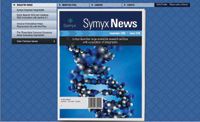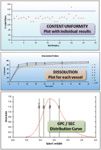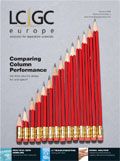Digital Update
Digital Update
Virtual Environmental Mass Spectrometry Conference 2009
The Virtual Environmental Mass Spectrometry conference (VEMS 2009) will take place online at analyticalmethodology.co.uk in March–April 2009 and is designed to act as a precursor for the "real" EMS 2010 conference, provisionally proposed for 2010.
The themes for the meeting have yet to be finalized. However, abstracts (< 50 Kb) for Applications of Environmental Mass Spectrometry (single A4 without images or tables) can be submitted for inclusion in the forum page as individual fora to PeterBaugh682@hotmail.com or peter@analyticalmethodology.co.uk
Presentations in short PowerPoint format (< 5 Mb) or as pdf will be subsequently required for uploading to the documents page under the category Virtual EMS 2009 (or VEMS 2009 exhibition) for company manufacturer and service industry display uploads.
Please note that on application as a delegate, presenter or exhibitor you will be supplied with a user name and password to register and to enable you to log in for the VirtualEMS2009 conference. If you wish to register directly click on Register with Us in the LHS menu of the Home page at analyticalmethodology.co.uk and the documents page for viewing and uploading of presentations.
The conference is being organized by the Environmental Mass Spectrometry Special Interest Group (EMSSIG).
Website: analyticalmethodology.co.uk
One-click access for instrument and software service
In response to customer feedback Waters has introduced an on-line tool for customers to be able to request local instrument service, technical support and other on-site services.
The company reports that with the iRequest system customers can get access to instrument service, technical support and training without needing the telephone. It is available 24 hours a day, 7 days a week.
This service is free to all worldwide customers via Waters' website.
Website: waters.com/ireques
Keeping updated with technologies, issues and innovations in R&D
Symyx Technologies has announced the introduction of a bimonthly electronic newsletter.
The technical e-newsletter, Symyx News, offers a source of information relating to technical and applications advances, news and product introductions for scientists looking to keep informed of innovations that assist in their research and development programmes.
This newsletter is free of charge and is distributed bimonthly. For more information visit the website.

Website: symyxnews.com
Chromeleon 6.80 Update
The Chromeleon 6.80 Extension Pack V2.0 which is free to Version 6.8 users — includes Sequence, Query, and Report templates that allow customers to quickly and easily perform and report common tests that can otherwise take a considerable amount of time.
With the Extension Pack, it is possible to calculate and report molecular weight averages and distribution in gel permeation chromatography (GPC)/size exclusion chromatography (SEC) directly in Chromeleon. EP and USP content uniformity testing has also been made easy. The templates calculate and report content uniformity results for up to three peaks and two experimental stages instantaneously. The evaluation of dissolution experiments for conventional release dosage forms according to EP and USP is complete in minutes with the new extension pack templates. Results for up to three peaks and three experimental stages are compared against specifications and presented graphically.

Website: dionex.com
Regulatory Deadlines and Supply Chain Challenges Take Center Stage in Nitrosamine Discussion
April 10th 2025During an LCGC International peer exchange, Aloka Srinivasan, Mayank Bhanti, and Amber Burch discussed the regulatory deadlines and supply chain challenges that come with nitrosamine analysis.











